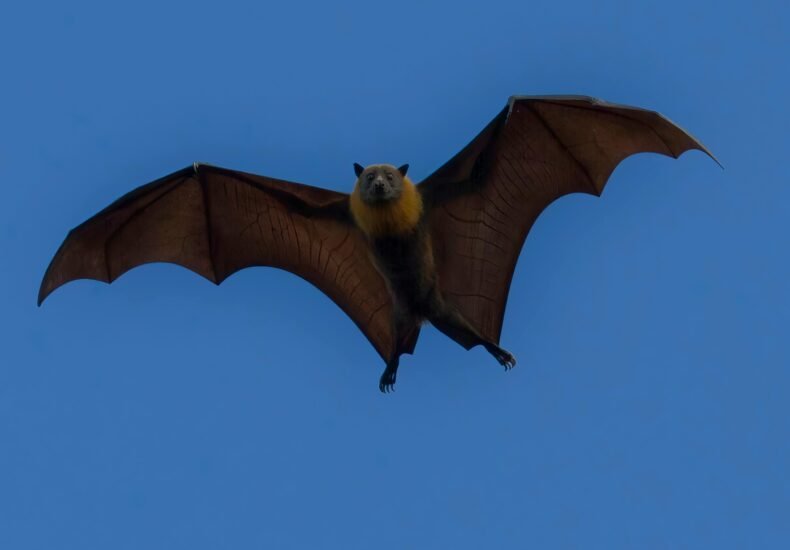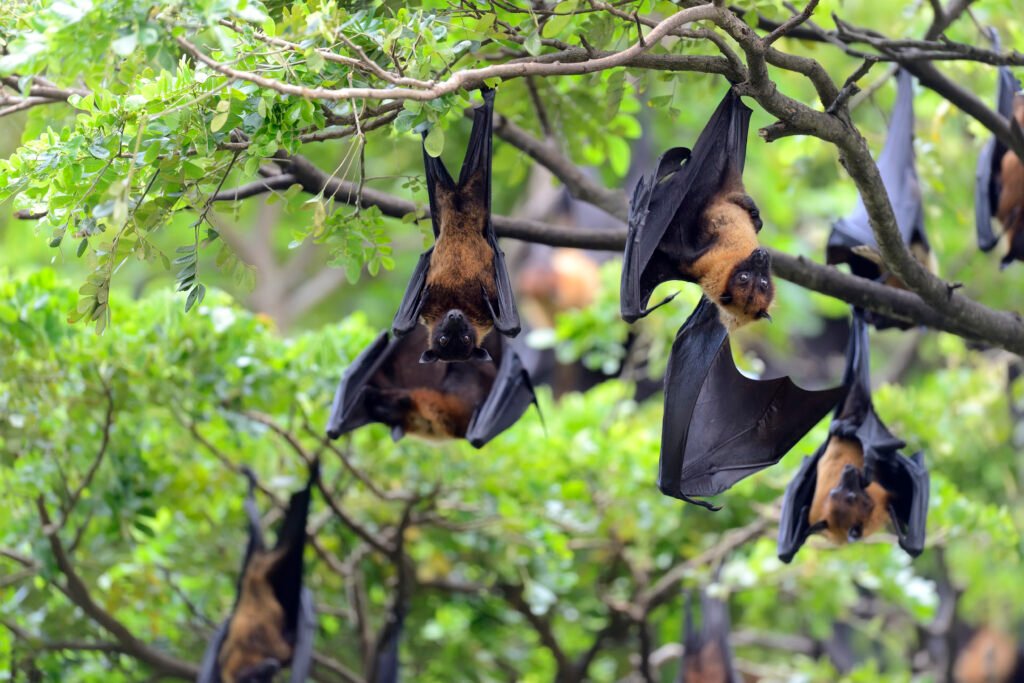
Flying Fox Bats: Nature’s Magnificent Cultivators
Flying fox bats, the biggest bats within the world, are captivating animals that capture the creative ability with their measure, social behaviors, and biological significance. These well evolved creatures have a place to the family Pteropodid and are regularly alluded to as “megabits.” Found basically in tropical and subtropical districts, flying fox bats play a significant part in keeping up timberland environments by pollinating plants and scattering seeds. In this article, we investigate their science, territory, behaviors, biological commitments, and the challenges they confront.
Science and Physical Characteristics
Flying fox bats are named for their foxlike facial highlights, counting pointed noses and huge, expressive eyes. Their wingspans are amazing, extending from 3 feet (0.9 meters) in littler species to over 5.5 feet (1.7 meters) in bigger ones, such as the monster golden-crowned flying fox (Aerocon juba Tus). In spite of their expansive estimate, these bats regularly weigh between 1 and 3 pounds (0.5 to 1.5 kilograms).
Not at all like numerous other bats, have flying foxes needed the capacity to echolocate. Instep, they depend on their intense sense of scent and great vision to explore and discover nourishment. Their expansive eyes are adjusted for low-light conditions, making them master nighttime foragers.
Flying fox bats basically nourish on natural products, nectar, and blooms. Their count calories give them the moniker “natural product bats.” With solid teeth outlined for tearing into natural products and a long tongue for tasting nectar, they are well-equipped to devour on a wide assortment of plant-based nourishments.
Environment and Conveyance
Flying fox bats possess tropical and subtropical locales, counting parts of Asia, Australia, Africa, and Pacific islands. They favor perching in tall trees in timberlands, mangroves, and indeed urban zones. Colonies of flying foxes, known as camps, can comprise of thousands of people. These camps are vital for social holding and breeding.
Shockingly, living space misfortune due to deforestation and urban improvement has altogether affected their characteristic ranges. As their timberland territories recoil, flying fox bats are progressively found in agrarian and urban regions, driving to more noteworthy intuitive with people.

Behavior and Social Structure
Flying fox bats are profoundly social creatures, regularly shaping expansive colonies where people perch together amid the day. Perching locales are loud and dynamic, with bats preparing, quarreling, and association. Social bonds inside colonies offer assistance keep up bunch cohesion and guarantee the survival of descendant.
At night, flying foxes take to the skies in look of nourishment, regularly traveling long distance up to 30 miles (48 kilometers) in a single night. This wide-ranging behavior empowers them to get to a different cluster of nourishment sources and contributes to their part as seed dispersers and pollinators.
Mating ordinarily happens within the perching camps, with females giving birth to a single pup after a incubation period of around 5 to 6 months. The mother cares for the pup solely, carrying it on her body amid daily scrounging trips until itis ancient sufficient to fly autonomously.
Environmental Significance
Flying fox bats are often alluded to as “cornerstone species” since of their basic part in keeping up solid biological systems. Their bolstering propensities make them remarkable pollinators and seed dispersers, basic for the generation of numerous tropical plants.
Fertilization: Flying foxes visit blossoms to drink nectar, incidentally exchanging dust from one blossom to another. This cross-pollination underpins the propagation of different plants, counting financially critical crops such as bananas, durians, and mangoes.
Seed Dispersal: After devouring natural products, flying fox bats either drop seeds whereas flying or discharge them in their droppings, frequently distant from the first tree. This dispersal advances woodland recovery and increments plant differing qualities in corrupted or deforested zones.
Without flying fox bats, numerous tropical timberlands would battle to maintain their biodiversity, as a few plant species depend only on these bats for fertilization and seed dispersal.
Dangers to Flying Fox Bats
In spite of their environmental significance, flying fox bats confront various dangers:
Environment Misfortune: The pulverization of timberlands for horticulture, logging, and urban development has altogether decreased their perching and nourishing grounds.

Chasing and Abuse: In a few districts, flying fox bats are chased for their meat or slaughtered due to their seen part as rural bugs. Ranchers regularly fault them for natural product trim harm, indeed in spite of the fact that their affect is negligible compared to other variables like creepy crawlies and climate.
Climate Alter: Rising temperatures, changed precipitation designs, and extraordinary climate occasions disturb nourishment accessibility and living spaces, putting extra weight on flying fox populaces.
Infection Misinterpretations: Flying fox bats have been related with the transmission of maladies just like the Nipa infection and Hendra infection. Whereas they are common stores for a few pathogens, these episodes are frequently connected to human exercises, such as habitat destruction and near intelligent with bats. Demonizing these creatures rather than tending to the root causes of malady flare-ups undermines preservation endeavors.
Preservation Endeavors
Preservation activities are significant to guaranteeing the survival of flying fox bats. Endeavors incorporate:
Living space Assurance: Protecting and reestablishing forested ranges gives fundamental perching and bolstering environments. Ensured regions and reforestation ventures advantage both bats and broader biodiversity.
Enactment: In a few locales, flying fox bats are ensured by law, making it unlawful to chase or slaughter them.
Instruction and Mindfulness: Teaching communities approximately the environmental significance of flying foxes makes a difference decrease clashes and cultivates coexistence. For case, agriculturists can utilize non-lethal strategies like netting to secure crops.
Inquire about: Proceeded investigate on flying fox populaces, behavior, and dangers is vital for creating viable preservation procedures.
The Ponder of Flying Fox Bats
Flying fox bats are uncommon animals that represent the interconnecting of nature. Their commitments to fertilization, seed dispersal, and timberland wellbeing make them crucial to tropical and subtropical biological systems.
Leave a Reply